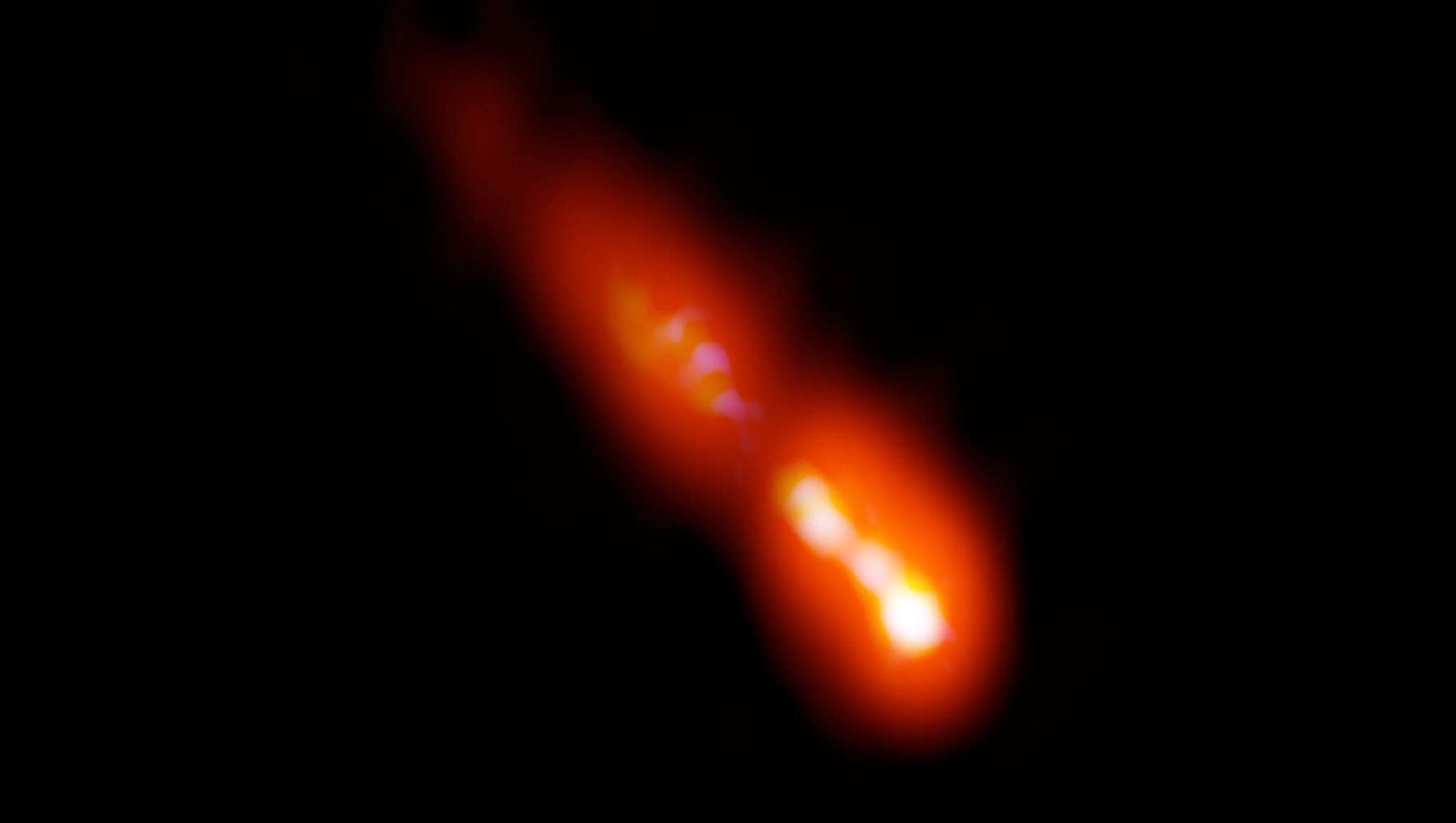Create a free profile to get unlimited access to exclusive videos, sweepstakes, and more!
Blazar from the dawn of the universe just sent star stuff blazing our way

How can you overlook anything about an almost preternaturally bright jet of glowing gas belched from the core of a galaxy? It is possible it if that galaxy is 12.8 billion light-years away.
Observations by the National Science Foundation’s Very Long Baseline Array (VLBA) have now revealed previously unknown things about the guts of 13-billion-year-old galaxy PSO J0309+27. This galaxy is a blazar, basically a quasar on steroids. Its jet of superhot gas is pointed towards Earth (but don’t start doomsday prepping — it’s no danger to us). PSO J0309+27 is now the brightest radio-emitting blazar ever seen that far away in space, and it is seen in the image above as it was when the universe was less than a billion years old.
Now that your mind has been sufficiently blown, the universe was only 7 percent of its current age when the blazar looked like that. A billion years is nothing in cosmic terms. Blazars from this early in the universe are rare, but analyzing this blazar’s properties can illuminate why so few supposedly formed that far back in the depths of time.
“Little is known observationally [about the] time when the Universe was young and the first sources (including active galactic nuclei, AGNs) ionized their surrounding gas in the period called cosmic reionization,” said astronomer Cristiana Spignola, who led a study recently published in Astronomy & Astrophysics.
Some theoretical models for why blazars were so rare at the dawn of the universe do exist, and Spignola’s team was able to support them with new observations of PSO J0309+27.
Blazars get revved up with fuel from the supermassive black hole at the galactic center, otherwise known as an active galactic nucleus or AGN. Our own AGN is Sagittarius A* (Sag A*). The black hole within a blazar takes even supermassive black holes to the extreme. As the blazar’s black hole devours star innards and other matter swirling around in its accretion disc, the disc blazes with heat and sends energy from everywhere imaginable in the electromagnetic spectrum out into space. This includes the radio waves being released from the AGN of PSO J0309+27, which is as massive as a billion suns.
Jets of energy are discharged from both ends of the AGN, and actually set AGNs apart from other black holes, so what we are seeing is the jet from just one end of this blazar’s core. Since blazars are set apart by the way their beams of radiation point straight towards Earth, so we are being showered by particles that took billions of years to reach us. However, the jets are thought to be transparent because high-energy photons escape earlier on.
Far from dreading the jet of this blazar and building underground shelters, we should be looking forward to seeing through the portal it offers to the nascent universe.


























